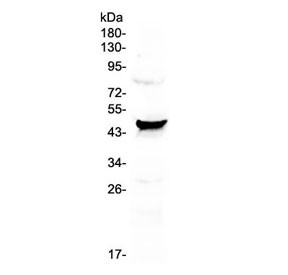Cookie preferences
This website uses cookies, which are necessary for the technical operation of the website and are always set. Other cookies, which increase the comfort when using this website, are used for direct advertising or to facilitate interaction with other websites and social networks, are only set with your consent.
Configuration
Technically required
These cookies are necessary for the basic functions of the shop.
"Allow all cookies" cookie
"Decline all cookies" cookie
CSRF token
Cookie preferences
Currency change
Customer-specific caching
FACT-Finder tracking
Individual prices
Selected shop
Session
Comfort functions
These cookies are used to make the shopping experience even more appealing, for example for the recognition of the visitor.
Note
Show the facebook fanpage in the right blod sidebar
Statistics & Tracking
Affiliate program
Conversion and usertracking via Google Tag Manager
Track device being used
| Item number | Size | Datasheet | Manual | SDS | Delivery time | Quantity | Price |
|---|---|---|---|---|---|---|---|
| NSJ-R32970 | 100 µg | - | - |
3 - 10 business days* |
772.00€
|
If you have any questions, please use our Contact Form.
You can also order by e-mail: info@biomol.com
Larger quantity required? Request bulk
You can also order by e-mail: info@biomol.com
Larger quantity required? Request bulk
0.5mg/ml if reconstituted with 0.2ml sterile DI water. NOV (nephroblastoma overexpressed), also... more
Product information "Anti-CCN3 / NOV / IGFBP9 (C-Terminal Region)"
0.5mg/ml if reconstituted with 0.2ml sterile DI water. NOV (nephroblastoma overexpressed), also known as CCN3, is a matricellular protein that in humans is encoded by the NOV gene. The protein encoded by this gene is a small secreted cysteine-rich protein and a member of the CCN family of regulatory proteins. CNN family proteins associate with the extracellular matrix and play an important role in cardiovascular and skeletal development, fibrosis and cancer development. Protein function: Immediate-early protein playing a role in various cellular processes including proliferation, adhesion, migration, differentiation and survival (PubMed:15181016, PubMed:15611078, PubMed:12695522, PubMed:21344378, PubMed:12050162). Acts by binding to integrins or membrane receptors such as NOTCH1 (PubMed:12695522, PubMed:21344378, PubMed:15611078). Essential regulator of hematopoietic stem and progenitor cell function (PubMed:17463287). Inhibits myogenic differentiation through the activation of Notch-signaling pathway (PubMed:12050162). Inhibits vascular smooth muscle cells proliferation by increasing expression of cell-cycle regulators such as CDKN2B or CDKN1A independently of TGFB1 signaling (PubMed:20139355). Ligand of integrins ITGAV:ITGB3 and ITGA5:ITGB1, acts directly upon endothelial cells to stimulate pro-angiogenic activities and induces angiogenesis. In endothelial cells, supports cell adhesion, induces directed cell migration (chemotaxis) and promotes cell survival (PubMed:12695522). Plays also a role in cutaneous wound healing acting as integrin receptor ligand. Supports skin fibroblast adhesion through ITGA5:ITGB1 and ITGA6:ITGB1 and induces fibroblast chemotaxis through ITGAV:ITGB5. Seems to enhance bFGF-induced DNA synthesis in fibroblasts (PubMed:15611078). Involved in bone regeneration as a negative regulator. Enhances the articular chondrocytic phenotype, whereas it repressed the one representing endochondral ossification (PubMed:21871891). Impairs pancreatic beta-cell function, inhibits beta-cell proliferation and insulin secretion. Plays a role as negative regulator of endothelial pro-inflammatory activation reducing monocyte adhesion, its anti- inflammatory effects occur secondary to the inhibition of NF- kappaB signaling pathway (PubMed:21063504). Contributes to the control and coordination of inflammatory processes in atherosclerosis. Attenuates inflammatory pain through regulation of IL1B- and TNF-induced MMP9, MMP2 and CCL2 expression. Inhibits MMP9 expression through ITGB1 engagement (PubMed:21871891). [The UniProt Consortium]
| Keywords: | Anti-NOV, Anti-NovH, Anti-CCN3, Anti-IBP-9, Anti-IGFBP-9, Anti-Protein NOV homolog, Anti-CCN family member 3, Anti-IGF-binding protein 9, Anti-Insulin-like growth factor-binding protein 9, Anti-Nephroblastoma-overexpressed gene protein homolog, CCN3 Antib |
| Supplier: | NSJ Bioreagents |
| Supplier-Nr: | R32970 |
Properties
| Application: | WB, IHC (paraffin) |
| Antibody Type: | Polyclonal |
| Conjugate: | No |
| Host: | Rabbit |
| Species reactivity: | human, rat |
| Immunogen: | Amino acids 334-357 (HTNCPKNNEAFLQELELKTTRGKM) were used as the immunogen for the CCN3 antibody. |
| Format: | Purified |
Database Information
| KEGG ID : | K23571 | Matching products |
| UniProt ID : | P48745 | Matching products |
| Gene ID : | GeneID 4856 | Matching products |
Handling & Safety
| Storage: | +4°C |
| Shipping: | +4°C (International: +4°C) |
Caution
Our products are for laboratory research use only: Not for administration to humans!
Our products are for laboratory research use only: Not for administration to humans!
Information about the product reference will follow.
more
You will get a certificate here
Viewed











